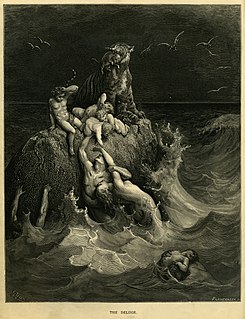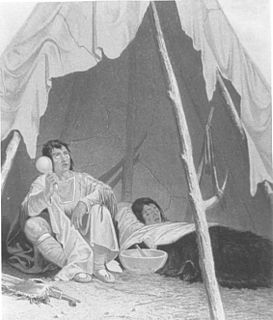 W
WChristians have held diverse views towards violence and non-violence through time. Currently and historically there have been four views and practices within Christianity toward violence and war: non-resistance, Christian pacifism, just war, and preventive war. The early church in the Roman empire adopted a nonviolent stance when it came to war since imitating Jesus's sacrificial life was preferable. The concept of "just war", whereby limited uses of war were considered acceptable originated with earlier non-Christian Roman and Greek thinkers such as Cicero and Plato. This theory was adapted later by Christian thinkers such as St Augustine, who like other Christians, borrowed much of the justification from Roman writers like Cicero and Roman Law. Even though "Just War" concept was widely accepted early on, warfare was not regarded as a virtuous activity and expressing concern for the salvation of those who killed enemies in battle, regardless of the cause for which they fought, was common. Concepts such as "Holy war", whereby fighting itself might be considered a penitential and spiritually meritorious act, did not emerge before the 11th century.
 W
WBeeldenstorm in Dutch, and Bildersturm in German are terms used for outbreaks of destruction of religious images that occurred in Europe in the 16th century, known in English as the Great Iconoclasm or Iconoclastic Fury. During these spates of iconoclasm, Catholic art and many forms of church fittings and decoration were destroyed in unofficial or mob actions by Calvinist Protestant crowds as part of the Protestant Reformation. Most of the destruction was of art in churches and public places.
 W
WThe Hebrew Bible and the New Testament contain narratives, poetry, and instruction describing, recording, encouraging, commanding, condemning, rewarding, punishing and regulating violent actions by God, individuals, groups, governments, and nation-states. Among the violent acts included are war, human sacrifice, animal sacrifice, murder, rape, genocide, and criminal punishment. The texts have a history of interpretation within the Abrahamic religions and Western culture that includes justification and opposition to acts of violence.
 W
WMatthew 10 is the tenth chapter in the Gospel of Matthew in the New Testament section of the Christian Bible. Matthew 10 comes after Jesus had called some of his disciples and before the meeting with the disciples of John the Baptist. This section is also known as the Mission Discourse or the Little Commission, in contrast to the Great Commission. The Little Commission is directed specifically to the Jewish believers of the early church, while the Great Commission is to all nationalities. The Pulpit Commentary suggests that Jesus' message in this discourse "was hardly likely to have been remembered outside Jewish Christian circles".
 W
WThe history of Christian thought has included concepts of both inclusivity and exclusivity from its beginnings, that have been understood and applied differently, in different ages, and have led to practices of both persecution and toleration. Early Christian thought established Christian identity, defined heresy, separated itself from polytheism and Judaism and invented supersessionism. In the centuries after Christianity became the official religion of Rome, some scholars say Christianity became a persecuting religion, while others say the change to Christian leadership did not cause any real persecution.
 W
WJust war theory is a doctrine, also referred to as a tradition, of military ethics studied by military leaders, theologians, ethicists and policy makers. The purpose of the doctrine is to ensure war is morally justifiable through a series of criteria, all of which must be met for a war to be considered just. The criteria are split into two groups: "right to go to war" and "right conduct in war" . The first concerns the morality of going to war, and the second the moral conduct within war. Recently there have been calls for the inclusion of a third category of just war theory—jus post bellum—dealing with the morality of post-war settlement and reconstruction.
 W
WThe Land letter was a letter sent to U.S. President George W. Bush by five evangelical Christian leaders on October 3, 2002, outlining their support for a just war pre-emptive invasion of Iraq. As its foundation for support, the letter refers to the "criteria of just war theory as developed by Christian theologians in the late fourth and early fifth centuries A.D." The letter was written by Richard D. Land, president of the Ethics & Religious Liberty Commission of the Southern Baptist Convention. It was co-signed by:Chuck Colson, founder of Prison Fellowship Ministries Bill Bright, chairman of the Christian organization Cru James Kennedy, president of Coral Ridge Ministries, and Carl D. Herbster, president of the American Association of Christian Schools
 W
WThe New Testament uses a number of military metaphors in discussing Christianity, especially in the Pauline epistles.
 W
WThe population figure of indigenous peoples of the Americas before the 1492 Spanish voyage of Christopher Columbus has proven difficult to establish. Scholars rely on archaeological data and written records from European settlers. Most scholars writing at the end of the 19th century estimated that the pre-Columbian population was as low as 10 million; by the end of the 20th century most scholars gravitated to a middle estimate of around 50 million, with some historians arguing for an estimate of 100 million or more. Contact with the Europeans led to the European colonization of the Americas, in which millions of immigrants from Europe eventually settled in the Americas.
 W
WThe Priestley Riots took place from 14 July to 17 July 1791 in Birmingham, England; the rioters' main targets were religious dissenters, most notably the politically and theologically controversial Joseph Priestley. Both local and national issues stirred the passions of the rioters, from disagreements over public library book purchases, to controversies over Dissenters' attempts to gain full civil rights and their support of the French Revolution.